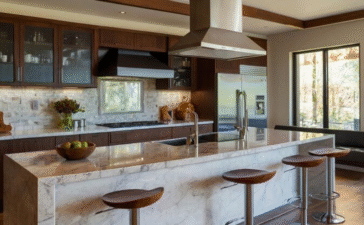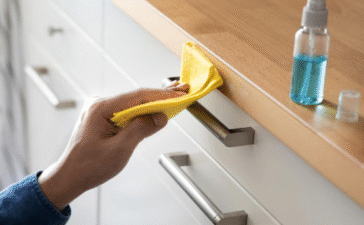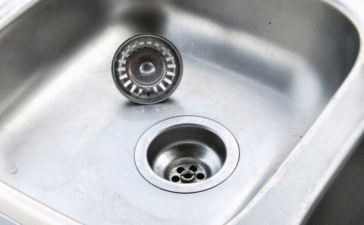Outdoor kitchens have become more than just a place to grill burgers. They are now sophisticated spaces for cooking, dining, and entertaining. A key component of a fully functional outdoor kitchen is a high-quality sink. It’s the hub for everything from washing fresh vegetables to cleaning up after a memorable backyard party. This guide will walk you through everything you need to know about selecting the perfect outdoor kitchen sink. We will explore different types, compare the best materials, offer installation advice, and provide maintenance tips to ensure your investment lasts for years. By the end, you’ll have the knowledge to choose a sink that enhances your outdoor cooking experience and fits your space perfectly.
Why Choose an Outdoor Kitchen Sink?
Adding a dedicated sink to your outdoor kitchen setup elevates it from a simple grilling station to a complete culinary workspace. The convenience of having running water right where you need it for outdoor cooking is a game-changer. You no longer need to run back and forth to your indoor kitchen to wash hands, rinse produce, or fill pots. This seamless integration improves kitchen functionality and makes your outdoor space more self-sufficient.
Hygiene is another critical benefit. An outdoor sink provides a designated area to wash hands and clean utensils, reducing the risk of cross-contamination, especially when handling raw meat. This is essential for safe food preparation. Furthermore, having a hot and cold water supply transforms your ability to entertain. It simplifies cleanup and allows you to manage messes as they happen, so you can spend more time enjoying the company of your guests. Ultimately, an outdoor sink is a practical addition that significantly enhances the joy of outdoor entertaining.
Types of Outdoor Kitchen Sinks
When selecting a sink, you’ll encounter several styles, each with its own installation method and purpose. The two primary installation types are under-mount and drop-in, while functional categories often include prep and bar sinks.
Under-mount vs. Drop-in Sinks
The choice between an under-mount sink and a drop-in sink often comes down to aesthetics and countertop material. A drop-in sink, also known as a top-mount sink, is installed from above into a pre-cut hole in the countertop. Its rim rests on the counter, creating a visible edge. This makes installation relatively straightforward and suitable for almost any countertop material.
An under-mount sink is installed from below the counter, creating a seamless transition from the countertop to the sink basin. This design offers a sleek, modern look and makes it easy to wipe food scraps and spills directly into the sink. However, under-mount sinks require a solid, water-resistant countertop material like granite or stone to support their weight and prevent moisture damage.
Prep Sinks vs. Bar Sinks
Beyond installation, consider the sink’s primary function. A prep sink is typically a smaller, secondary sink designed for food preparation tasks. It’s perfect for washing vegetables, trimming meat, or filling pots without monopolizing the main sink area. For avid outdoor chefs, a dedicated prep sink can streamline the cooking process significantly.
A bar sink is also usually small, but its main purpose is for entertaining. It’s ideal for rinsing glasses, mixing drinks, and holding ice. If your outdoor kitchen is a social hub, a bar sink can keep the beverage station separate from the food prep area, allowing for better workflow when hosting guests.
Best Materials for Outdoor Kitchen Sinks
The material of your outdoor sink must be durable enough to withstand constant exposure to sun, rain, and fluctuating temperatures. Choosing a corrosion-resistant sink is crucial for longevity.
Stainless Steel
A stainless steel sink is the most popular choice for outdoor kitchens, and for good reason. It is incredibly durable, resistant to rust and corrosion, and can handle extreme temperatures. High-quality, 304-grade stainless steel is recommended for outdoor use due to its higher nickel and chromium content, which enhances its weather resistance. Stainless steel is also non-porous, making it hygienic and easy to clean.
Granite Composite
A granite composite sink offers a sophisticated and modern aesthetic for your outdoor kitchen. Made from a mixture of crushed granite and acrylic resin, these sinks are highly durable, scratch-resistant, and can withstand high heat. They come in a variety of colors, allowing for better coordination with your countertop and overall design. Granite composite is also non-porous and resistant to stains and fading from UV exposure, making it a stylish and practical choice.
Cast Iron and Ceramic
While aesthetically pleasing, cast iron and ceramic sinks are less common for outdoor kitchens. Cast iron sinks are coated with a thick layer of enamel, providing a classic, glossy finish. They are extremely durable but also very heavy, requiring reinforced cabinetry for support. The enamel can chip if struck by a heavy object, exposing the iron beneath to potential rust. Ceramic sinks offer a similar timeless look but can be prone to cracking with drastic temperature changes, making them less ideal for climates with harsh winters.
Outdoor Kitchen Sink Installation Tips
Proper outdoor sink installation is key to its performance and durability. This involves careful planning of the plumbing, water supply, and drainage.
Plumbing Considerations
Setting up the plumbing setup for an outdoor sink requires connecting it to your home’s main water lines. You will need to run both hot and cold water supply lines to the sink’s location, ensuring they are properly insulated to prevent freezing in colder climates. The drainage solutions are equally important. You can connect the sink’s drain to your home’s main sewer system or, depending on local codes, install a dry well or a French drain to manage greywater. Always check with your local municipality for regulations regarding outdoor plumbing and waste disposal.
Faucet and Sprayer Features
The faucet is a critical component of your outdoor sink. Look for models made from durable, corrosion-resistant materials like stainless steel or brass. A high-arc faucet provides ample clearance for filling large pots and washing bulky items. Features like a pull-down sprayer can be incredibly useful for rinsing the entire sink basin and cleaning produce. Choosing a faucet with both hot and cold water handles gives you the versatility needed for all your outdoor cooking and cleaning tasks.
Maintenance and Care for Your Outdoor Kitchen Sink
Proper care will keep your outdoor sink looking and functioning its best for years. Your maintenance routine will depend on the sink’s material and your local climate.
Cleaning and Protecting Your Sink
Regular sink cleaning is essential. For a stainless steel sink, use a mild soap and a soft cloth, rinsing thoroughly and wiping dry to prevent water spots. Avoid abrasive cleaners or steel wool, which can scratch the surface. For a granite composite sink, a non-abrasive cleaner and a soft sponge will suffice.
To protect your sink from the elements, consider a sink cover when it’s not in use. This can prevent debris from collecting and shield the material from harsh sun or rain, prolonging its life and maintaining its appearance. Following these outdoor sink maintenance tips will ensure your investment remains a valuable part of your outdoor kitchen.
Frequently Asked Questions (FAQs)
How do I winterize my outdoor kitchen sink?
Winterizing your outdoor sink is crucial to prevent pipes from freezing and bursting. Start by shutting off the water supply to the outdoor kitchen. Open the faucet to drain any remaining water from the lines. Use an air compressor to blow out any residual water from both the hot and cold pipes. Pour a small amount of RV-specific, non-toxic antifreeze into the sink drain to protect the P-trap. Finally, cover the sink and faucet to shield them from snow and ice.
Can I use a regular kitchen sink outdoors?
While you can technically install an indoor kitchen sink outdoors, it’s not recommended. Indoor sinks are not designed to withstand the harsh conditions of an outdoor environment, such as UV radiation, extreme temperature fluctuations, and moisture. They may rust, crack, or fade over time. Outdoor-rated sinks are made from more durable, corrosion-resistant materials specifically chosen to endure these elements, ensuring a longer lifespan and better performance.
What is the best material for an outdoor kitchen sink?
The best material for an outdoor kitchen sink is typically 304-grade stainless steel. It offers the best combination of durability, corrosion resistance, ease of cleaning, and affordability. Granite composite is another excellent choice, providing superior durability and a more high-end aesthetic, though it often comes at a higher price point. Your choice will ultimately depend on your budget, style preference, and the specific climate in your area.
Also Check: “outdoor kitchen faucet“
Final Thoughts on Your Outdoor Sink
Choosing the right outdoor kitchen sink is a critical step in creating a functional and enjoyable outdoor living space. By carefully considering the type, material, and features that best suit your cooking and entertaining style, you can select a sink that not only meets your practical needs but also enhances the overall design of your backyard oasis.
From convenient food prep to effortless cleanup, a well-chosen sink will transform your outdoor kitchen experience. For the best results and to ensure your plumbing meets local codes, consider consulting a professional for installation. With the right sink in place, you’ll be ready to make the most of your outdoor kitchen for years to come.












